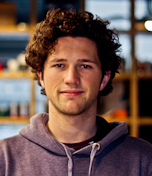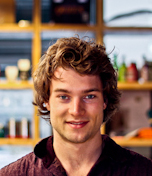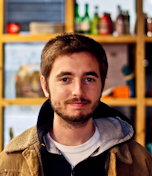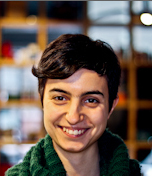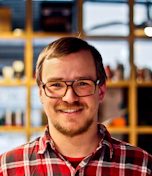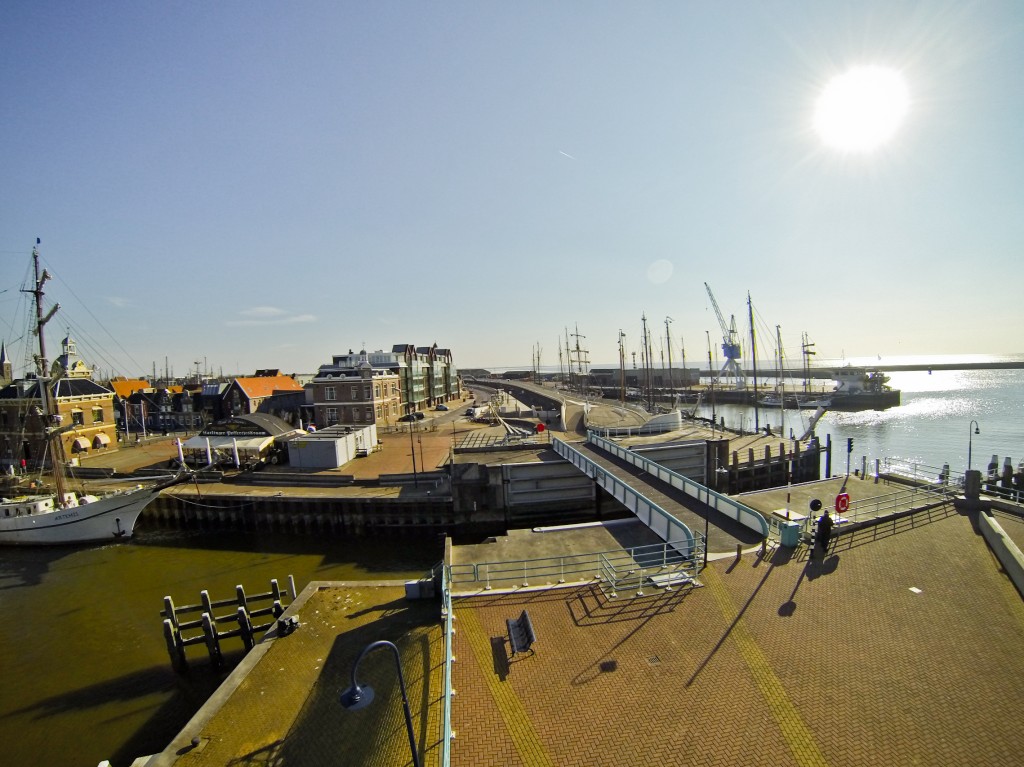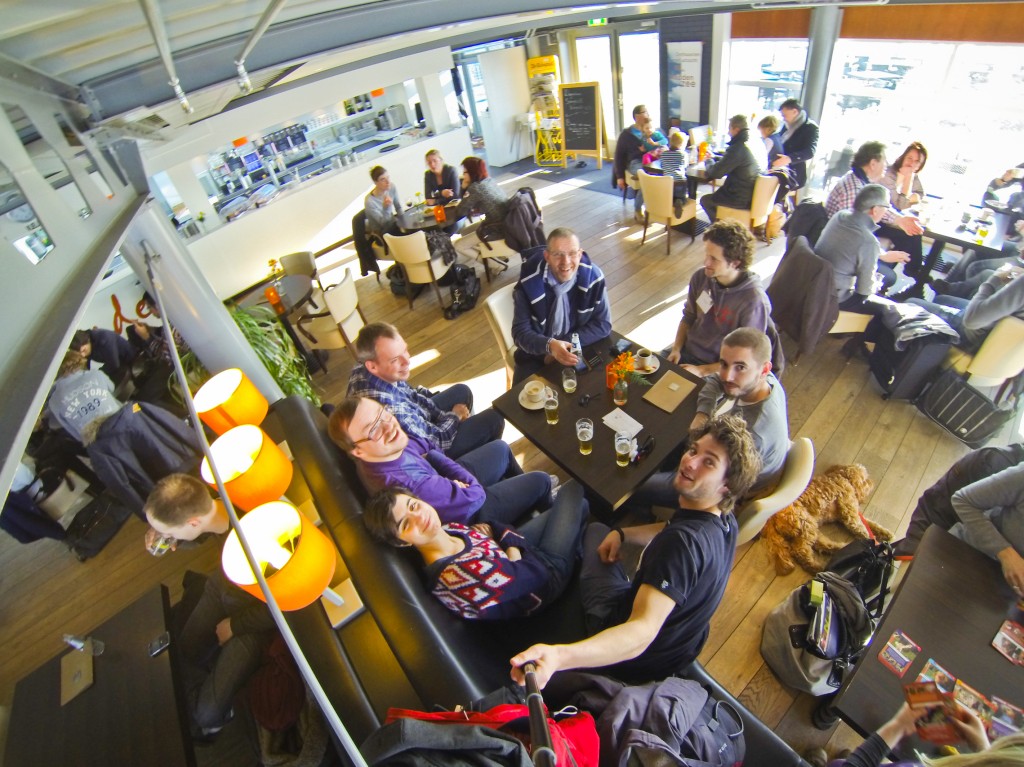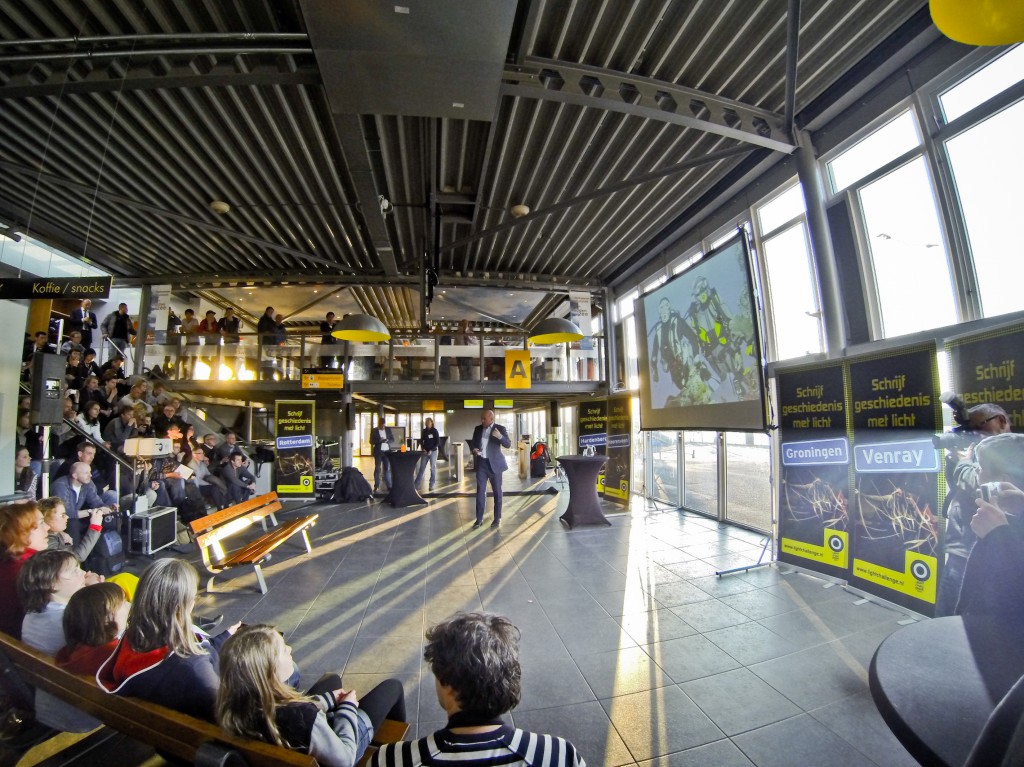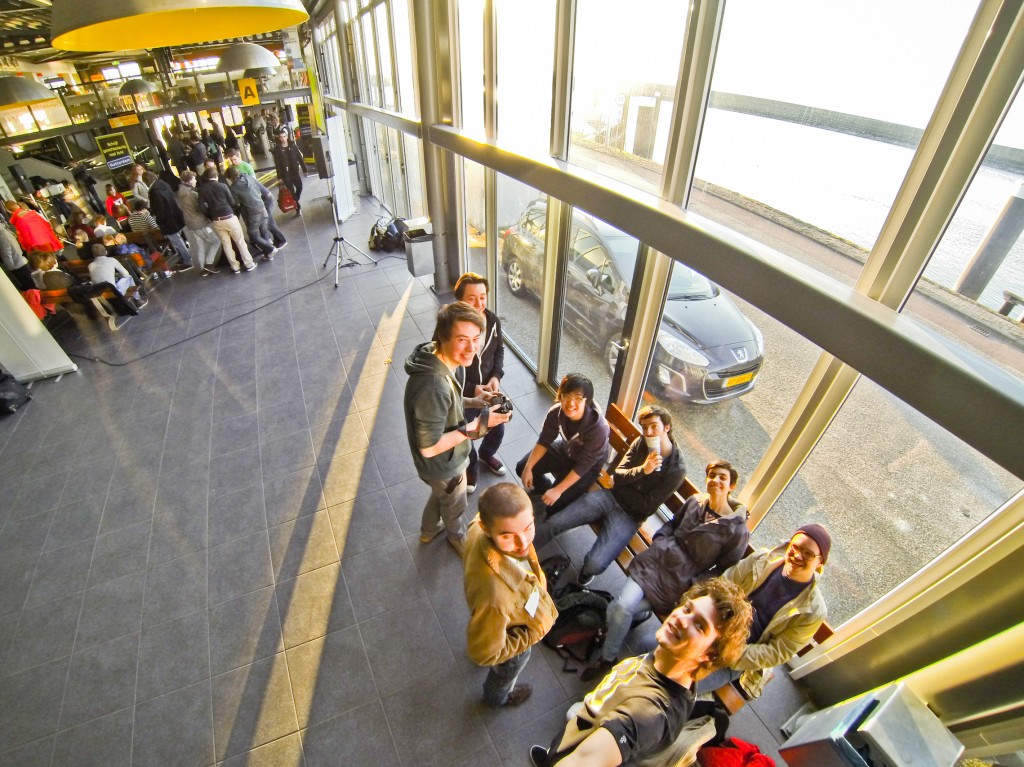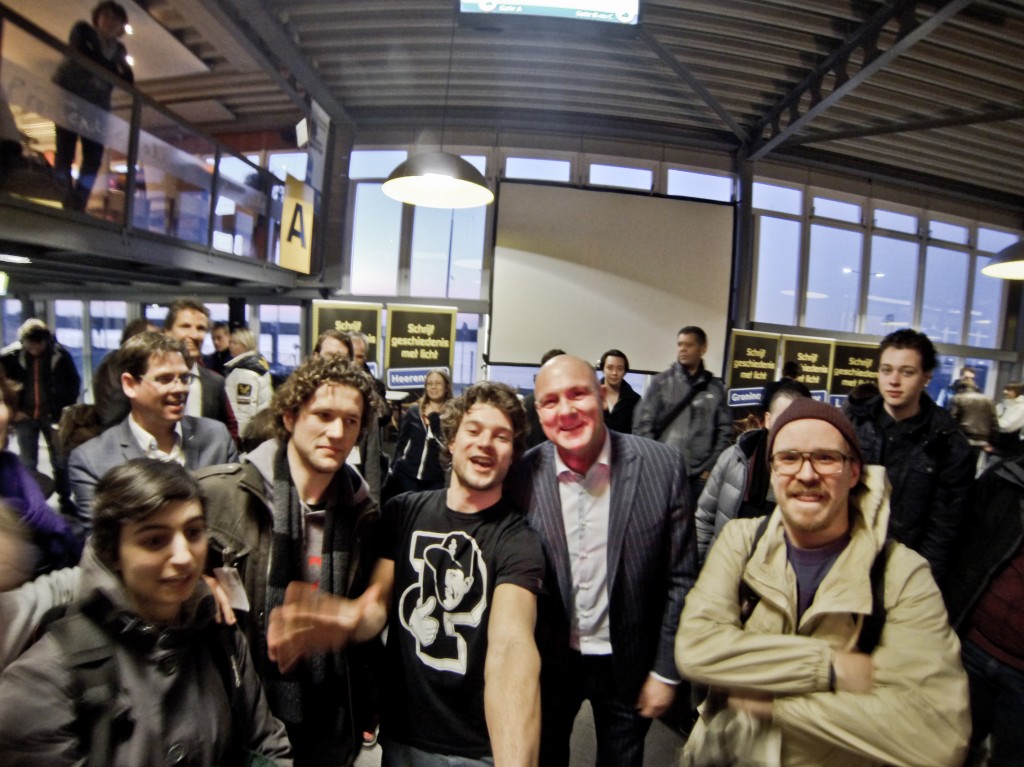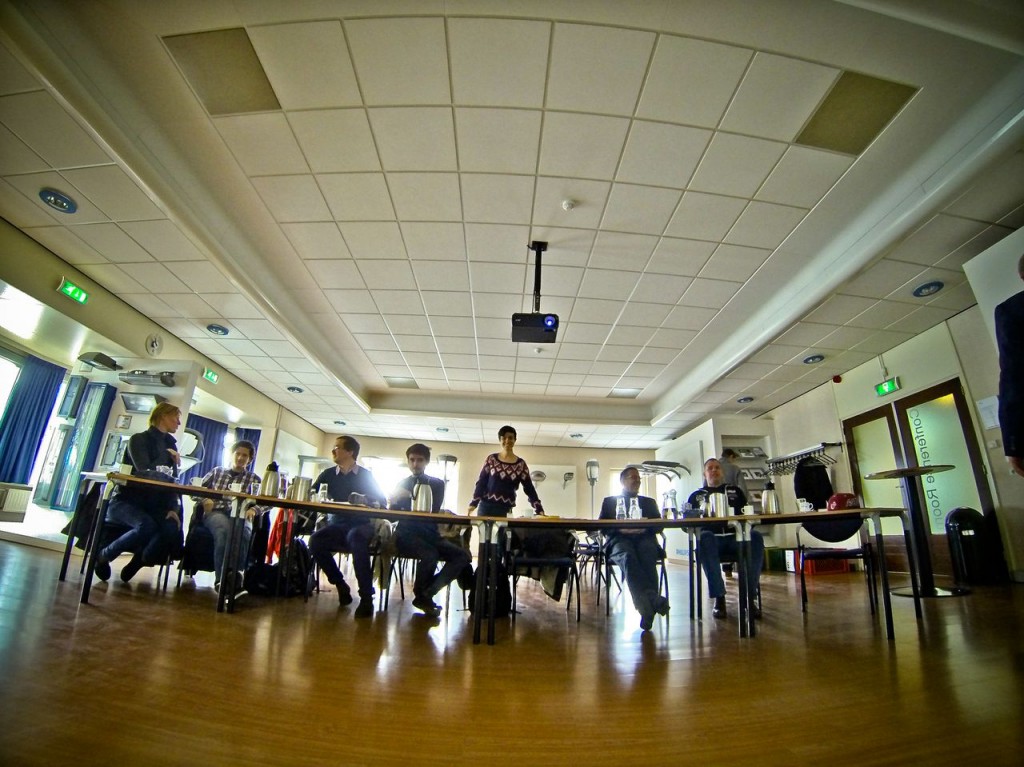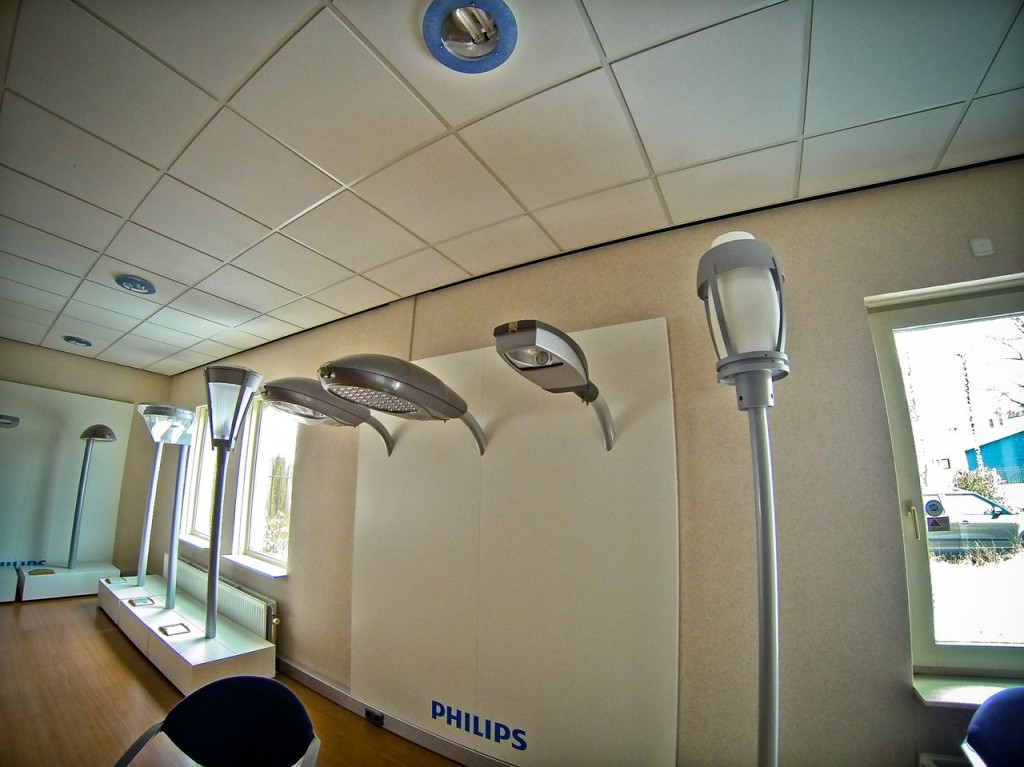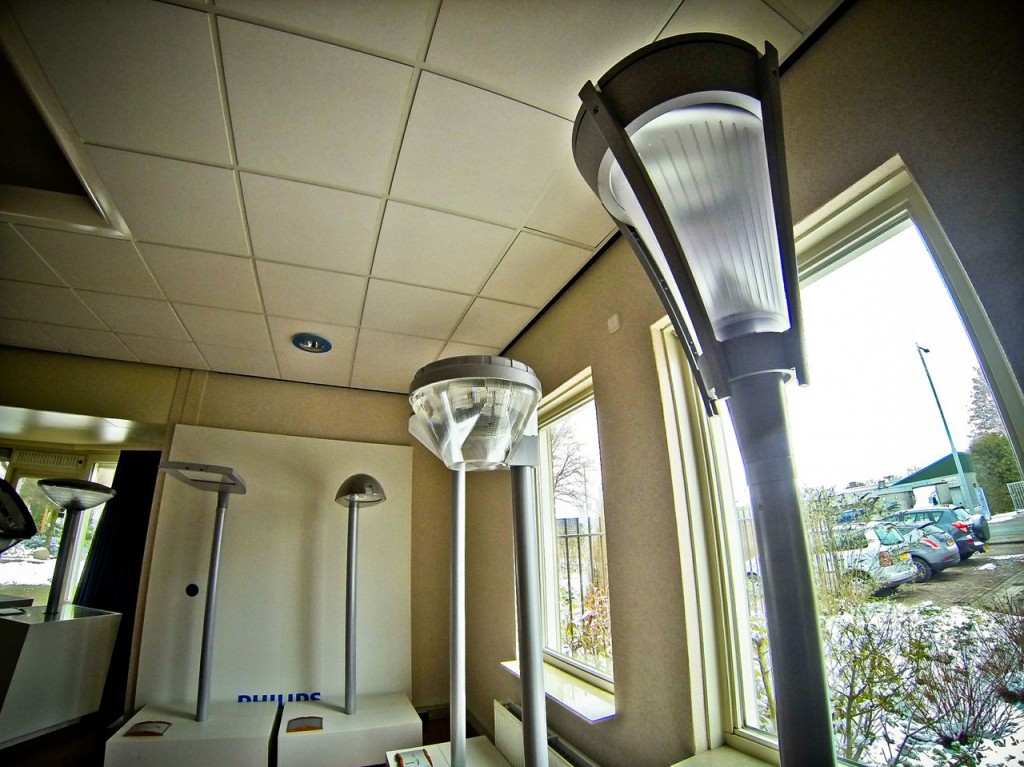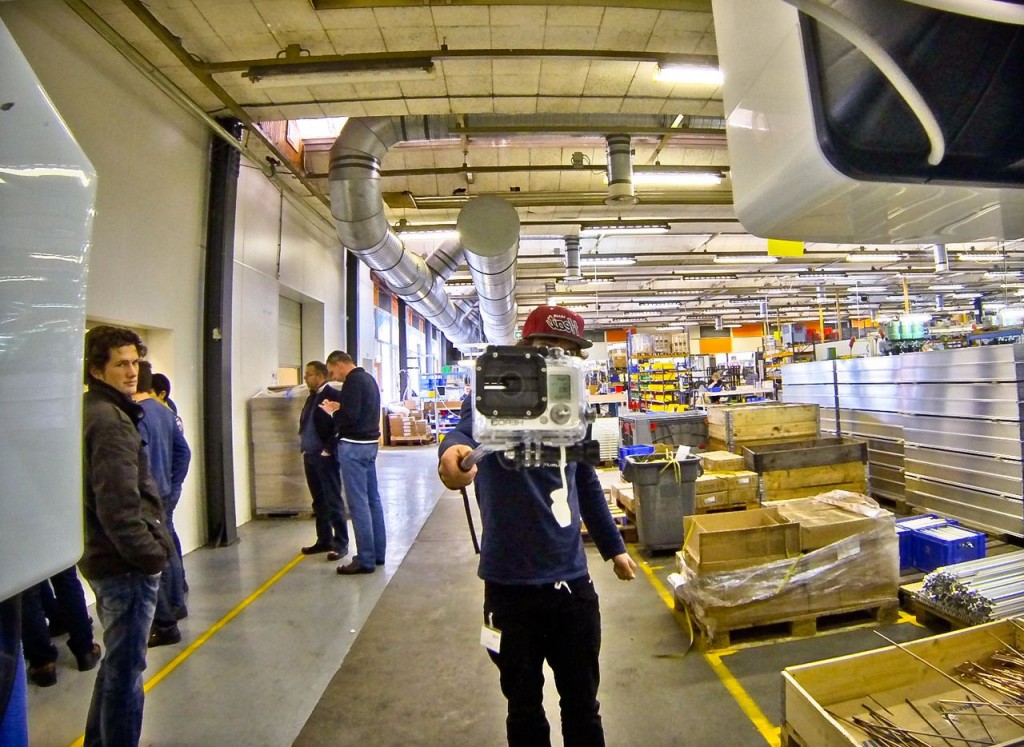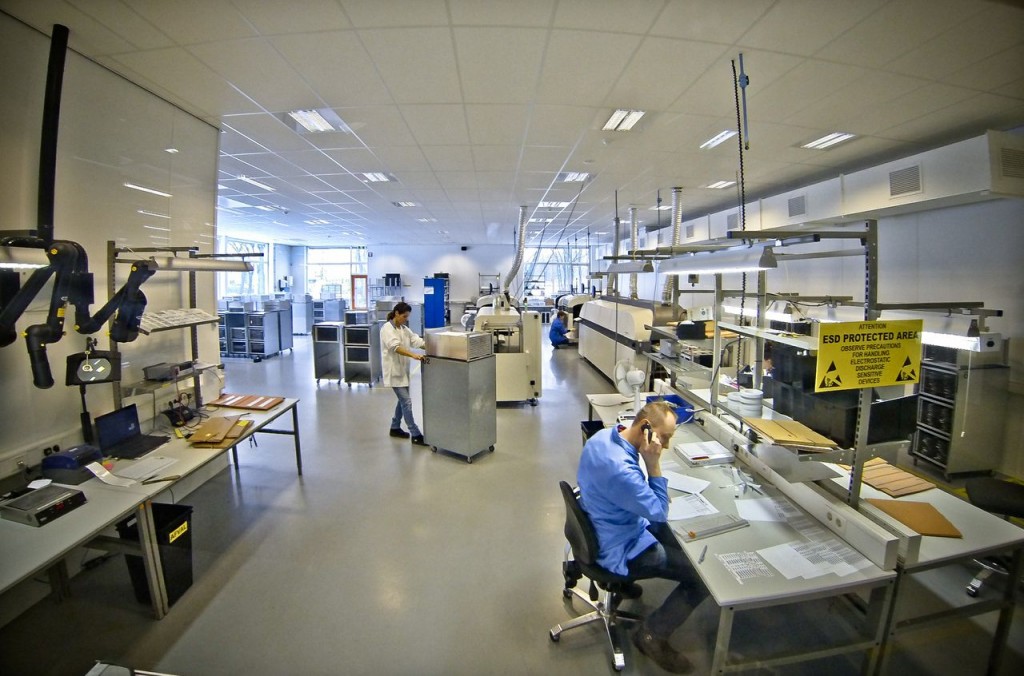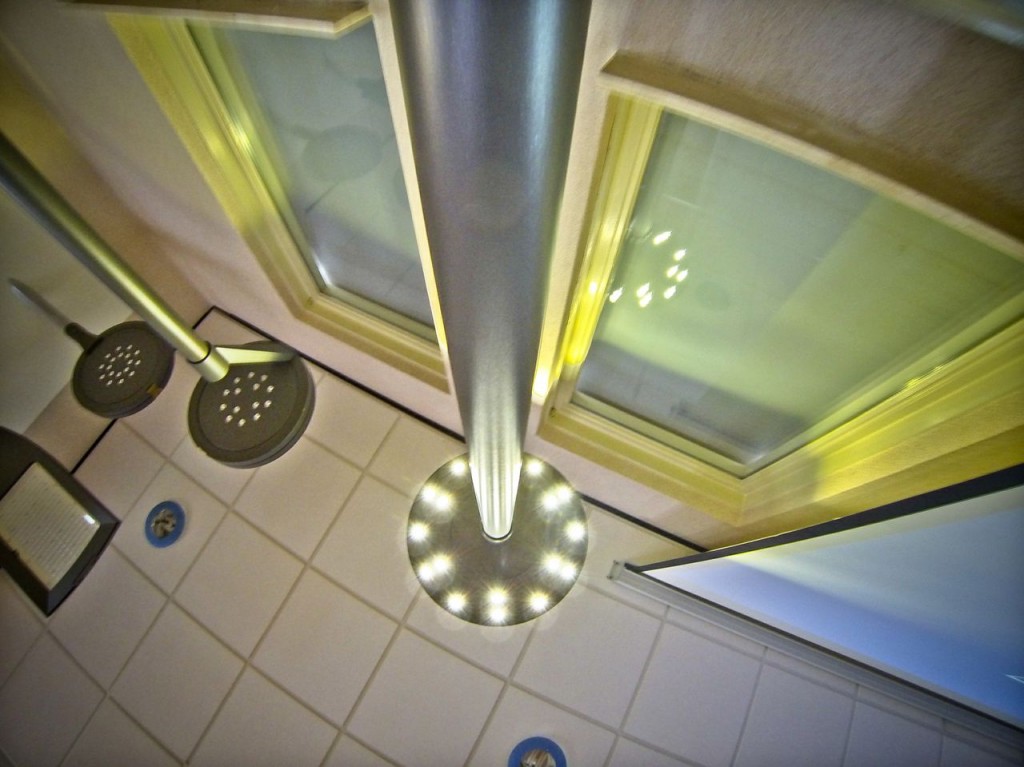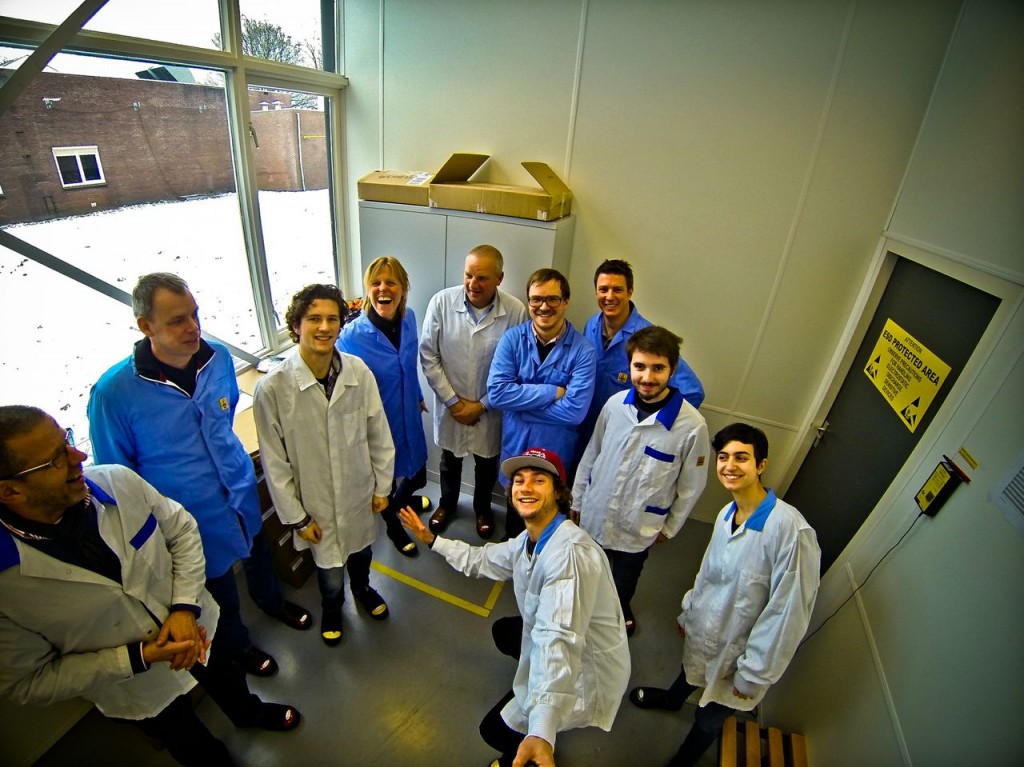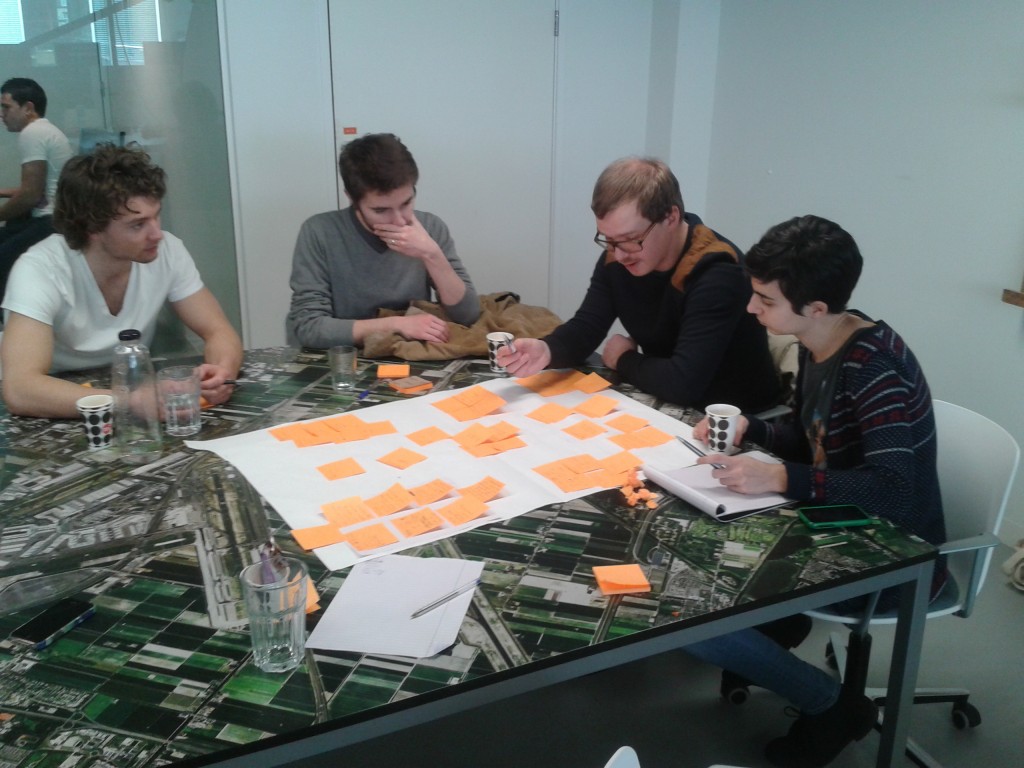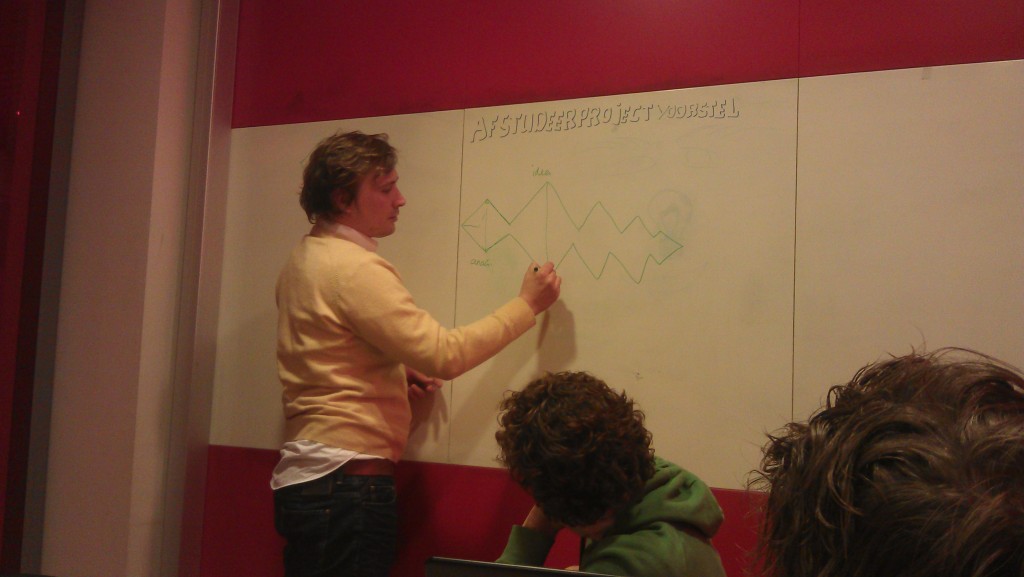Masterclass in Terschelling
Last week we went to Terschelling for the two days masterclass “The value of darkness” in which – as in the rest of Light Challenge activities – all teams participated with their respective coaches.
We had a presentation of the famous Dutch astronaut André Kuipers. He explained us some interesting aspects of the daily life in the International Space Station (ISS), for example: how he had to learn to move without gravity an the importance of water in the station, due to the fact it is an expensive but basic good. He showed pictures of objects randomly floating around in the spaceship, and therefore very hard to find back when you’re not watching them. Most interesting for us – as designers of public lighting – were the pictures of the Earth taken from the space station. Kuipers showed us pictures of the northern- and southern light seen from space, and also the magnetic fields that form patterns around the globe. Furthermore he made a lot of pictures of islands, countries, deserts, mountains, lakes and forests. You could really see the effect of darkness in space and the light around the planet.
After the presentation, we had the opportunity to ask questions about his travel, his motivations to become an astronaut and the future of his career. He explained how difficult it is to be selected again since the european part of the ISS is relatively small (around 8%) and the age is an important factor.
Then we took the boat from the Waddenpromenade to Terschelling. When we arrived at the island, three presentations were given about darkness and light pollution. The mayor of Terschelling told about the plans that the island has about green energy, more effective light and the value of darkness on the island. Then the coach of one of the teams told about historic inventions that were important for lighting in the Netherlands, and the last presentation was told by a project developper. He told about his idea of Dark Sky Parks. In this kind of park there is not any light pollution, so you can really see the dark sky, the stars and the moon. During the walk to the hostel where we would spend the night we could see the value of darkness on the island. There are many areas where you can really see the sky without light pollution.




